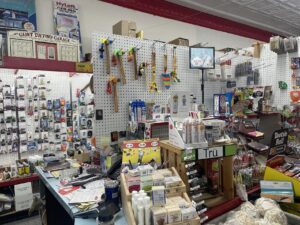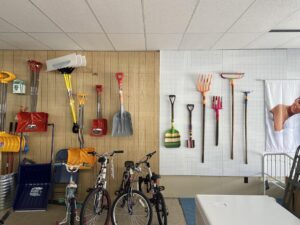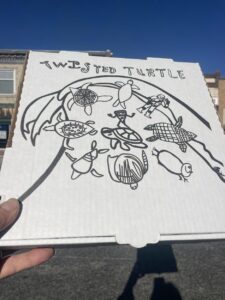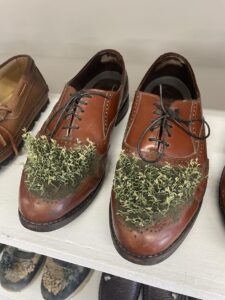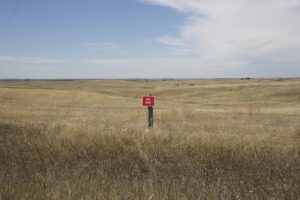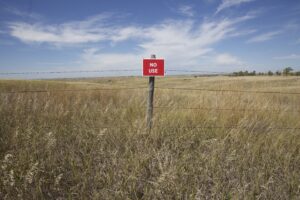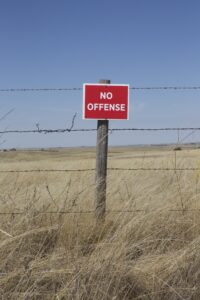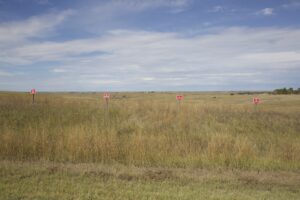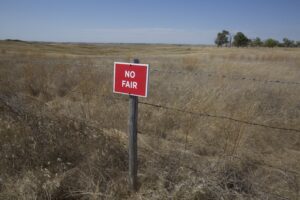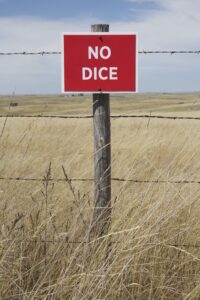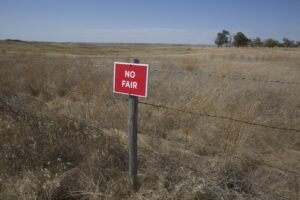Professor Emeritus Mel Zeigler – new projects and Sandhills Institute 10th Anniversary
Mel Ziegler (Paul E. Schwab Chair of Fine Arts, Professor Emeritus) has been busy in his retirement from Vanderbilt University as co-director the Sandhills Institute – a civically-engaged art program and residency integrated in and around the agricultural community of Rushville, Nebraska. Ziegler has worked with leading artists forging bonds with the Rushville community of ranchers and farmers developing experimental programs grounded in collaborative research and creative expression. The Institutes goal is to strengthen economic, environmental, and cultural fabric of the area while celebrating its historic and varied cultural heritage. Learn more about the Sandhills at their website: https://www.sandhillsinstitute.com/

Sandhills Institute is celebrating its 10 year anniversary (2014-2024) and new projects have made their public debut.
Art aRound Town
Sandhills Institute celebrates its 10 year anniversary with an exhibition on Main Street, Rushville, Nebraska.
“Art aRound Town”
The Sandhills Institute, dedicated to integrating art and community, has sponsored three artists and one educator this summer to participate in what the Institute entitled “Art aRound Town.” Elaine Bradford, Myranda Bair, Jared Steffensen and Gordon-Rusvhille Language Arts teacher Niki Waugh have traveled to Rushville from Nevada, Utah, Texas, and nearby Gordon to engage and showcase the latent artistic skills of children and of 6th grade students, and they have insinuated themselves into commercial enterprises in surprising, intriguing and often delightful installations.
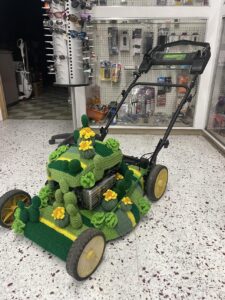
Elaine Bradford of Houston is known for transforming the craft of crochet into the realm of art. In her exhibition, Feeling Soft in the Hardware Store, she has installed her own version of tools in and amongst the hard-edged metal tools of Hinns’ Hardware Store. Friends in Houston donated their old, timeworn tools to Elaine who crocheted over them in bright colors and patterns. The effect is to see these tools—hammers, shovels, pitchforks, numerous hand tools, and a lawnmower—in new light. Relieved from their chores, these tools—always handy and dependable—can be appreciated for their myriad shapes and for the perfection of design that has made them the go-to implements for hundreds of years. The Hinn family facilitated and guided her placement of objects in and around their store.
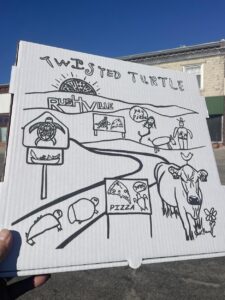
Across the street and a few steps uptown, the Twisted Turtle Pub’s owners, Tosha and Courtney Fuller, welcomed artist Myranda Bair’s idea of inviting Rushville children to design images for the blank faces of white Take Out pizza boxes. The project, which she calls Hometown Slice, attracted over twenty-five children, each bringing his or her idea of what should be on the box. Myranda presented the young artists with long tables filled with crayons, pencils and stacks of drawing paper. Although she is a consummate artist, illustrator, and teacher, she did not intervene or place any restrictions on their work. It was an approach that resulted in a flurry of creativity, interrupted only by occasional breaks for pizza, generously provided by the Fullers. Myranda has now collated all the drawings, using them to tell charming stories to be printed on both large and small pizza boxes. They are now available for “Take Out.” at the Twisted Turtle Pub.
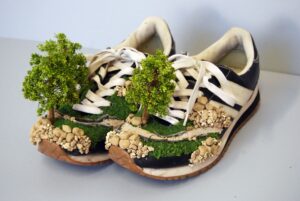
Just across the street, at Willy Moc’s Shoe Store, there is another instance of art and commerce intermingling. In a project called Landscape Shoes Jared Steffensen’s installation consists of pairs of shoes that have been altered to depict imagined landscapes. They are meant to be a nod toward where the wearer might have worn them. They range from rocky mountaintops to tree-lined fields and rolling hills. Some of the shoes represent personal landscapes, tapping into the places the wearers think of as “home.” They speak about place, homesickness and the desire to take “home” with you wherever you go. Because Erk and Jodi Milton, who design, make and sell shoes in their Main Street store, are artists themselves, they allowed the altered shoes to be placed on shelves with shoes of their own making. So, Jared’s shoes are there, seemingly minding their own business, yet likely to cause many a double take.
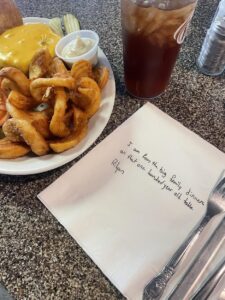
Back during the Spring semester of her 6th grade language arts class at Gordon-Rushville Middle School, teacher Niki Waugh received an interesting request from the Sandhills Institute: Would she consider asking her 6th grade students to write a poem about where they are from to help develop a project that would find its way to the napkins at the Bunkhouse Bar and Grill in Rushville. She responded enthusiastically and gave the assignment with the prompt “I am from . . . “ and asked the students to take it from there. The responses from this simple question resulted in poems that were so richly descriptive— places, landscapes and hard work, parent’s names (and their advice), flowers and machines, jeans and Wranglers, brandings and meals— even chicken fried steak— that the prompt might have been called “Things I love . . . “ Because the ideas (place and love) were so intertwined, the Sandhills Institute selected 12 quotes from a variety of poems to highlight those emotional touchstones. With the collaboration of Bunkhouse owners Tom and Tawnie Eichenberger, who have embraced the project, there is every reason to believe that their patrons will unroll napkins and suddenly find themselves wondering where they are from.
Information provided by the Sandhills Institute, Rushville, Nebraska.
NO, NO, NO.
NO, NO, NO
A profile
By Georgia Eliot
In 1982, First Lady Nancy Reagan advised Americans facing an epidemic of drug use, to “Just Say No.” Later, in the climate of sexual harassment awareness, the international non profit, No Means No, coined the eponymous slogan and oft-used mandate. Each of these catch phrases used “no” in the clearest, most definitive and appropriate way, suitable for the serious issues they were addressing. But, in the ever-evolving nature of language, “no” has also found itself referring to dozens of situations and casual expressions. For instance, how often have you heard “No problem,” after saying thank you or “No wonder,” to suggest something that could have been predicted? And how about when an idea is good, but not good enough to celebrate—hence, “No cigar”? Or this when a person is an amoral, despicable “no good.” Then, of course, there is the earnest, emphatic, “No kidding” and its spin-off “No kidding?” standing in for “Really?”
These are just a handful of the myriad uses of no that have worked their way into common parlance. But it took conceptual artist Mel Ziegler to highlight them in a work of art entitled “NO, NO, NO.” He has placed 50 red signs, bearing various uses of “No” on fence posts lining the west side of lower Main Street in Rushville, NE. It is a perfect example of how Ziegler who, with his late wife Kate Ericson, made a name for themselves in the art world of the 1980s and 90s with conceptual art that involved itself with ideas. Often temporary and, in their work, always civically engaged, conceptual art has the ability to make subtle statements about all manner of things, including history, injustice or, in a more light-hearted vein, language. Ericson/Ziegler, as their partnership was called, and later, Mel Ziegler on his own, were masters at this thought-provoking art form, and widely celebrated as pioneers of civically engaged art. The book on their work, entitled America Starts Here (published by MIT Press) documents the scores of artworks they produced together.
In the almost thirty years following Ericson’s death, Ziegler has continued to create conceptual art, which has been featured in New York galleries and museums around the country. But it was not until he, on a family vacation, stumbled into the ranching-community of Rushville with its life-giving aquifer, that he seemed to hear a specific calling. He bought a ranch, which tapped into his love of agrarian life instilled by his upbringing on a large dairy farm in Pennsylvania, and began to spin dreams about establishing a residency program that sponsored artists to engage and celebrate the community and its way of life. This year, the Sandhills Institute, as he named his program, has marked its 10th year of providing artist-community interactions. Currently, the Art aRound Town exhibition showcases the work of three artists and one educator and reveals the welcoming nature of merchants in Rushville who have hosted their installations.
There are three more artists slated to create artworks in Rushville next year. And, for what they will find to inspire them? Well, there’s just “No Telling.”
(Georgia Eliot is a freelance writer specializing in artist biographies)
The NO NO NO project was funded by Mel Ziegler and not through the Sandhills Institute and will remain in place through early October 2024. Information provided by the Sandhills Institute, Rushville, Nebraska.
